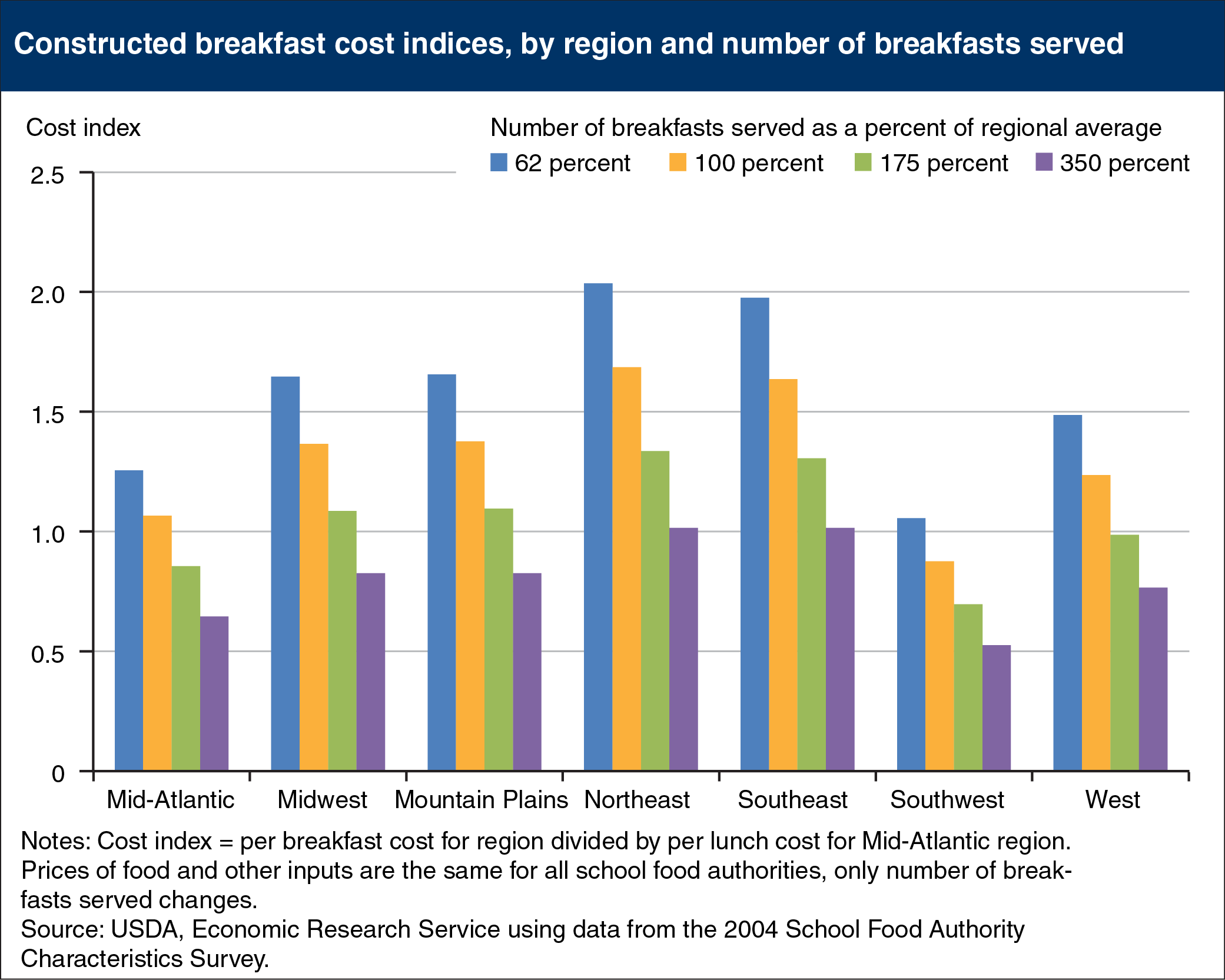School breakfast costs drop as number of breakfasts served increases
- by Joanne Guthrie and Michael Ollinger
- 11/12/2015

Through the National School Lunch and School Breakfast Programs, USDA reimburses school food authorities (SFAs) for providing meals that meet USDA nutritional standards. School districts generally expect SFA revenues—a combination of USDA reimbursements, payments by participating students, revenue from non-reimbursable food sales, and other non-Federal resources—to cover meal costs. Using data from a 2004 national study, ERS researchers constructed cost indices to allow comparisons across SFAs of how per meal costs would vary if more meals were served. Researchers found that the number of meals served had a large impact on per meal costs, especially for breakfasts. In all seven U.S. regions, breakfast costs dropped as the number of breakfasts increased. Per breakfast costs for the smallest SFAs were about twice that of the largest SFAs. Serving more breakfasts would allow SFAs to gain economies of scale—reduced per unit costs due to volume discounts in purchases, more efficient use of labor, or other efficiencies. This chart appears in the ERS report, Economies of Scale, the Lunch-Breakfast Ratio, and the Cost of USDA School Breakfasts and Lunches, released on November 5, 2015.

